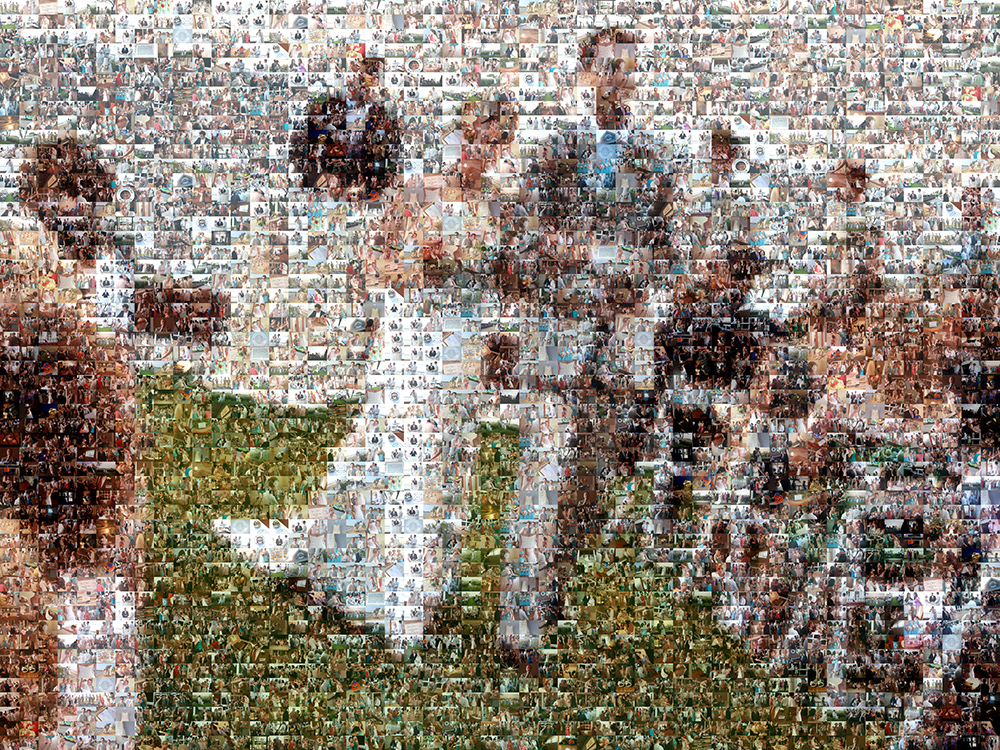One of the most important components of a photo mosaic is the source image. A source image is the bigger picture that the smaller photos (called “cells”) will create. Any photo can be used as a source image, but not just any photo will the completed photo mosaic that WOW factor. The real question is how well the photo will survive the mosaic transformation. For this post, I’ll be focusing on portrait photos. Landscapes, logos, and other non-human subjects will be addressed in future posts, so stay tuned!
When using a photo of people as your source image, it’s important to consider facial recognition. In order for facial shapes and details to survive the photo mosaic transformation, you’ll want the faces to encompass a fairly large portion of the image, measuring at least 1/3 of the width and height of the entire photo. This will allow a great amount of detail and clarity to come through in the photo mosaic. Here are a couple examples of photos that should produce good facial recognition:
It’s important to keep the number of people in the photo to a minimum, less than four is best. Wide angle and large group shots (more than 4-5 people) usually yield very little to no facial recognition. This isn’t to say that wide angle and group shots won’t produce a great photo mosaic, but facial recognition is almost always out of the question. Here’s an excellent example of a photo mosaic with a wide angle source image:

If you have a wide angle photo and you want the faces to really come through in the mosaic, try cropping into the photo. Let the faces take up more area in the photo, this will allow them to retain more detail in the completed mosaic.
I hope this has helped bring you closer to choosing a source! Keep in mind that choosing your source ultimately depends on which details are the most important to you. If facial recognition is a top priority, don’t be afraid to crop into the photo a bit!


